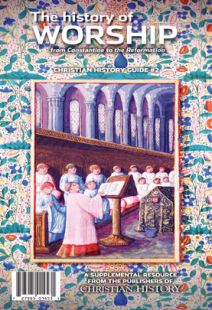Clothes fit for a bishop
A BISHOP of the eleventh century could expect to spend a significant amount of time in preparation for the celebration of Mass. Each action of preparation, including the donning of each separate vest ment, would be accompanied by a specific prayer, psalm verses, or other short versicle.
After the bishop entered the church and prayed for a short time at the altar, he would enter the sacristy. The vesting rite would begin with a ritual handwashing, and then the removal of his ordinary outerwear. He would then don a series of liturgical vestments in layers.
The first was the amice (amictum or ephot), a rectangular piece of cloth worn around the neck and held in place by thin strings tied around the body. Next came the alb, and then the cincture [belt]. . . .
Next, the bishop put on the stole, and then the three overtunics: the tunicle, the undecorated sleeved tunic worn by subdeacons at Mass; the dalmatic, the more elaborately decorated sleeved tunic worn by deacons; and the priestly chasuble. The final vestment worn by all priests was the maniple, a stylized and elaborately decorated band of cloth worn on the wrist. . . .
Next, the bishop would put on a series of “pontifical” vestments, those reserved for episcopal use. some vesting orders called for the donning of special pontifical stockings (caligae or udones) and soft shoes or slippers (sandalia or campagi). Others listed prayers for the bishop to recite as he put on special gloves (chirothecae), his episcopal ring (annulum), [and] his pallium (a special white circle of cloth, often embroidered with crosses, worn around the neck, granted to certain bishops by the pope). . . .
Other vestments might include the mitre (a . . . stiff cloth cap, often pointed at the top) and the crosier (baculus or pedum, a staff of pastoral office, often made of precious metals and curved at the end like a shepherd’s crook). The vesting rite could conclude with one or two “general vesting” prayers, and a series of verses and responses. CH
The Oxford History of Christian Worship, by Geoffrey Wainwright and Karen B. Westerfield Tucker, “vestments and objects,” p. 843.
By Reprinted from the Oxford History of Christian Worship
[Christian History originally published this article in Christian History Issue #102+ in 2012]
Next articles
What did “sacrament” mean to medieval Christians? And how many were there?
How the Middle Ages came to settle on seven sacraments
Jennifer Woodruff TaitWhat sorts of music did worshipers use?
The early Christians faced a musical dilemma
Jennifer Woodruff TaitSupport us
Christian History Institute (CHI) is a non-profit Pennsylvania corporation founded in 1982. Your donations support the continuation of this ministry
Donate



